Modern. Lightweight.
Multi-Cluster.
Kubernetes GUI
Meet the Kubernetes UI you've been waiting for.
View, compare and manage workloads across multiple clusters
from your machine using a beautiful, fast and intuitive app.
Used by engineers from innovative startups to industry giants





“Fast, slick Kubernetes UI that outperforms Lens and k9s! Aptakube is a breath of fresh air in a landscape of increasingly bloated apps — I can't recommend it highly enough!”

Connect to multiple clusters.
Simultaneously!
Say goodbye to switching between multiple terminals or browser tabs. Aptakube is the only Kubernetes GUI that can connect to multiple clusters simultaneously.
All your pods, deployments and other Kubernetes resources available in one view, across all your clusters.
Learn more →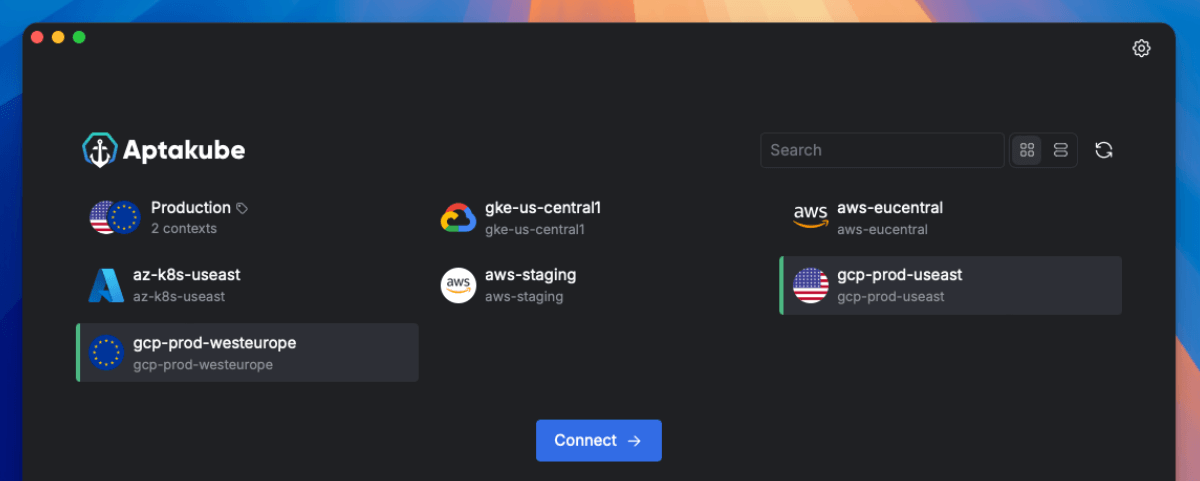
Aggregated Log Viewer
Viewing logs in Kubernetes has never been easier. With Aptakube you can stream live and historical logs from multiple pods and containers at the same time.
Looking for something specific? Logs can be filtered and downloaded for further analysis with other tools.
Learn more →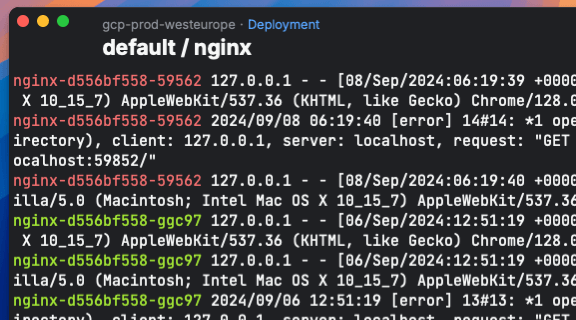
Pod and Node usage metrics
Get a quick overview of CPU and Memory metrics across your nodes and apps. Works with metrics-server and Prometheus!
Aptakube makes it easy for you to find opportunities to optimize resource allocation in your cluster.
Learn more →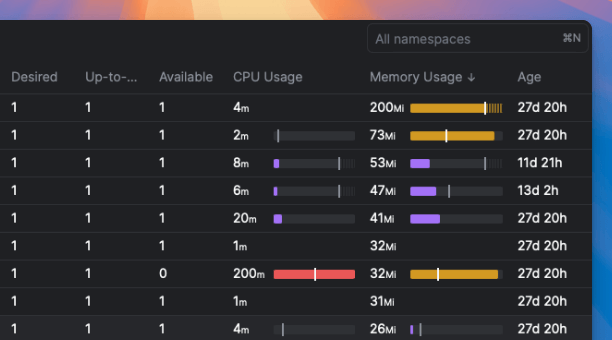
Port Forwarding
Forgot how to start port-forward with kubectl? No problem!
Aptakube allows you to forward ports from pods to your local machine in one click, directly from the UI.
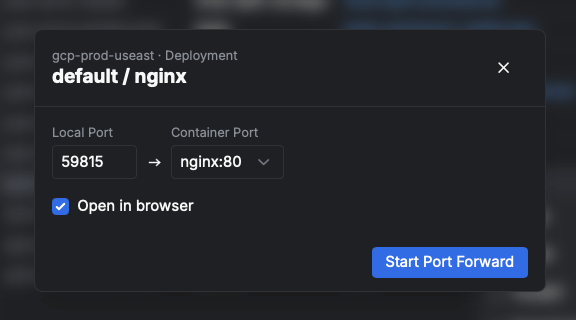
Resource Diff
Aptakube allows you to compare resources across different clusters or namespaces.
Find differences in resource configurations and easily identify differences between clusters.
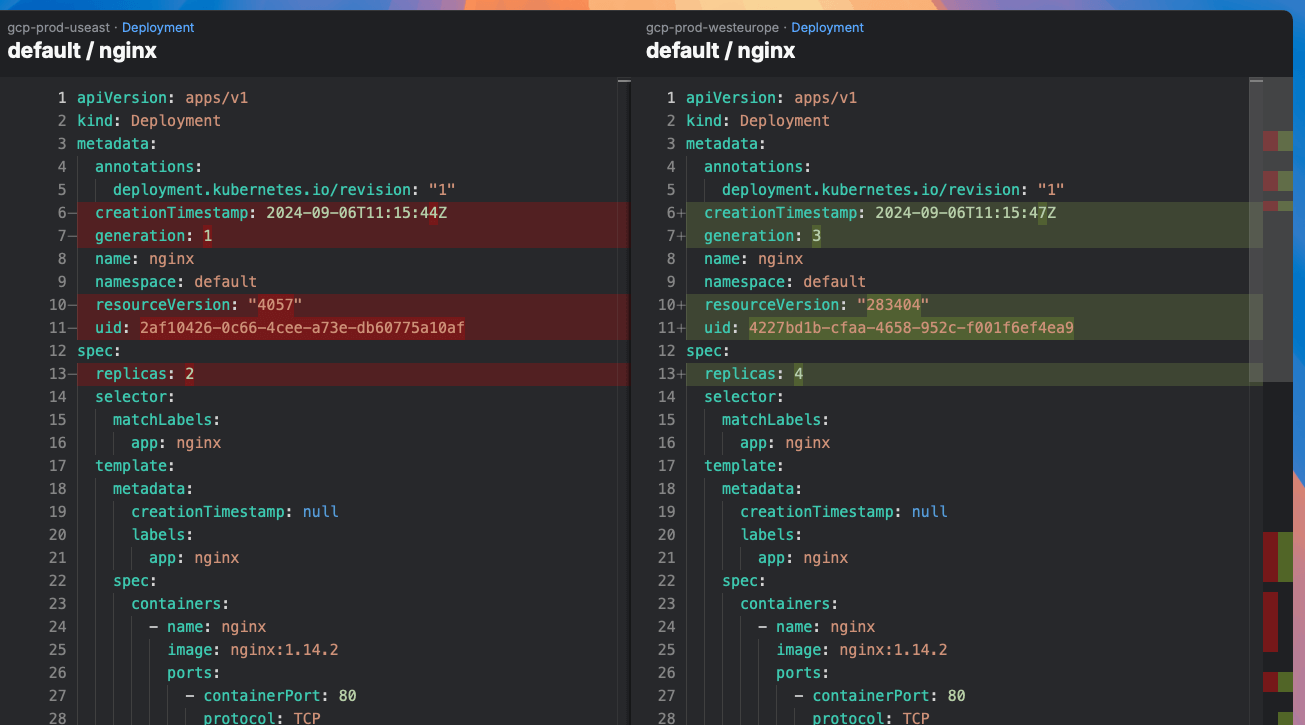
View, Create & Modify Resources
All your Kubernetes resources available in a human-friendly format, reducing the time it takes to find what you're looking for.
Love YAML? No worries, we've got you covered! You can also view and modify objects using YAML directly in Aptakube.
Learn more →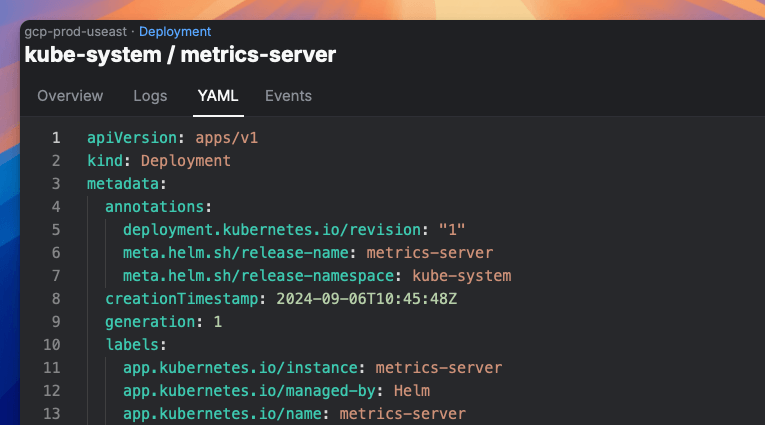
Quick Actions
Aptakube provides quick actions for common tasks, so you can restart pods, scale out replicas, and much more without having to memorize commands.
Same behavior as kubectl, but with an easy to use, intuitive and graphical desktop interface. Less typing, more visual feedback.
Learn more →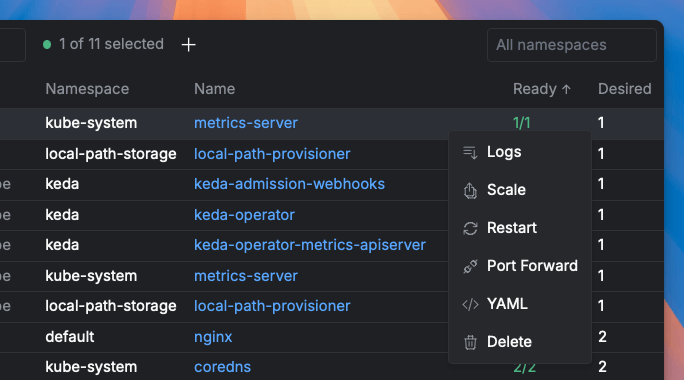
Zero-config setup
If you're already using kubectl, then Aptakube will just work, no extra configuration is required!
Aptakube does not modify your existing configuration. You can view any context without impacting your existing CLI workflow.
Learn more →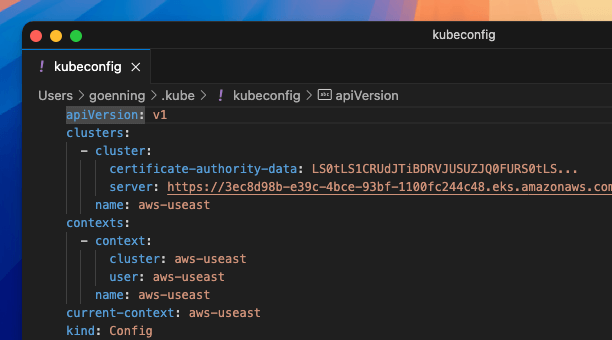
Human-friendly resource view
YAML got you lost in a sea of lines? YAML is great, but sometimes it's too much.
Aptakube uses a human-friendly format to display all the important things about your Kubernetes resources.
Learn more →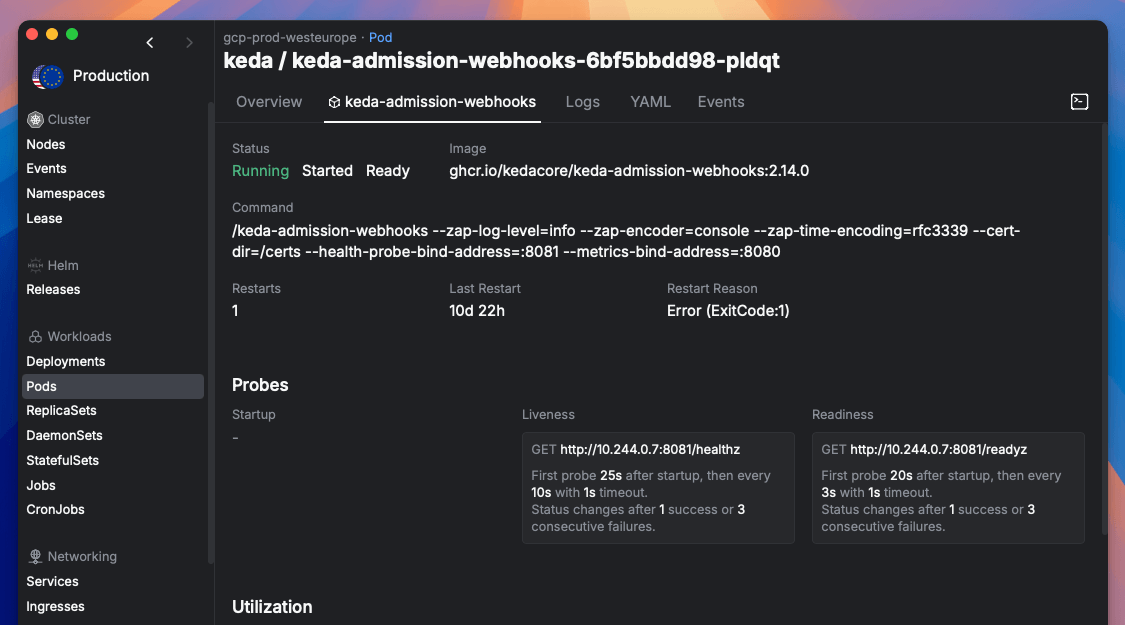
See what the others are saying about Aptakube.
Aptakube is used and loved by thousands of Engineers and SRE. You don't want to miss out!
Aptakube works with any Kubernetes cluster.
GKE, EKS, AKS, OpenShift, Talos, Rancher, and many other distributions!






Download
One app. All platforms.
Aptakube is the best Kubernetes GUI for macOS, Windows and Linux
Windows 10+ x64 · 13.5 MB
Ubuntu and Debian-based Linux · 14.3 MB
Fedora and RPM-based Linux · 14.3 MB
Apple Silicon and Intel · 24.5 MB
Other Linux distributions · 135 MB
Frequently asked questions
- Is it safe to use Aptakube?
- Yes. Aptakube connects directly to your cluster's API server from your machine. Your cluster data, logs and connection settings will never leave your machine. Learn more about our security practices.
- What Kubernetes versions are supported?
- Aptakube follows the EKS, AKS , and GKE release calendar, which generally means the last 5 Kubernetes versions are supported. Older releases of Aptakube may still support older Kubernetes versions.
- Is this another Electron app?
- Nope! Aptakube is built with Tauri, a smaller, faster, and more secure alternative. Look at how small the downloaded binaries are!
- Do I need to install something on my cluster?
- No. Aptakube does not require any custom server-side component. It's a Kubernetes GUI client that runs on your machine and connects directly to your cluster's API Server, just like kubectl.
- How does it compare to kubectl?
Aptakube is a Kubernetes GUI client that runs on your desktop, while kubectl is a CLI. They have similar functionality, but Aptakube is easier to use and more intuitive. Aptakube can also connect to multiple clusters simultaneously, reducing the time it takes for you to get stuff done.
Everyone has their own preferences, but in general we recommend kubectl for automation and scripting, while Aptakube is best suited for general day-to-day use, inspection and troubleshooting.
- There is a missing feature I need, can you implement it?
- We use GitHub to track features and releases. You can submit new requests or upvote existing ones by using reactions and comments.
